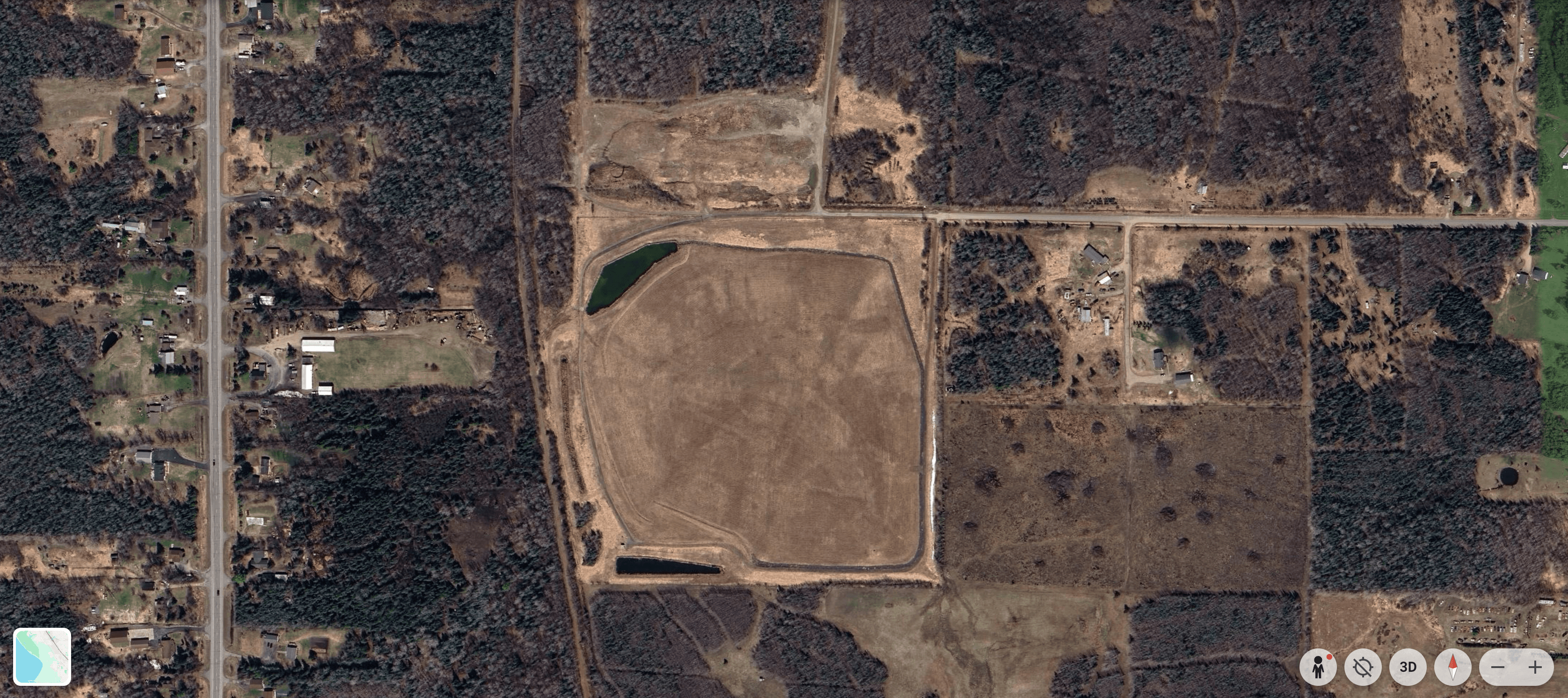Ocala highway stabilization with MIRAFI Rsi
Ocala built a four-lane highway over deep fill in an active mine using a multi-layer MIRAFI RSi geosynthetic system to stabilize weak, saturated soils.

The Minnesota Pollution Control Agency (MPCA) operates the Closed Landfill Program (CLP), a voluntary program established by the state legislature in 1994 to properly close, monitor, and maintain Minnesota’s closed municipal sanitary landfills. Under this program, MPCA assumes responsibility for remaining clean-up activities, closure construction, and the long-term care of these sites. Landfills are prioritized using a scoring model that assesses risks to public health, safety, and the environment. Sites with higher scores are ranked as greater priority, guiding the allocation of resources and remediation actions.
The Koochiching County Landfill was among the sites identified as a priority for remediation. It began in the 1940s as a dump, accepting municipal and commercial waste, and in 1978 it was permitted as a municipal solid waste landfill. It remained operational until 1992, by which time it contained an estimated 855,000 yd3 of waste over an area of approximately 28 acres.
The original closure of the Koochiching County Landfill was constructed with a soil cover equivalent to 4 ft. This cover proved insufficient over time, leading to leachate seepage and stability concerns. By 2009, a feasibility study concluded that the landfill’s soil cover was failing, placing the site in immediate need of remediation.
The remediation design called for a new leachate collection and treatment system and a state-of-the-art geomembrane cap. The cap would consist of a synthetic geomembrane overlain by a vegetated soil cover. For this system to function effectively, surface water infiltration had to be managed. Without efficient drainage, water could accumulate in the soil layer above the geomembrane, causing instability, potential erosion, and additional strain on the barrier system. Ensuring long-term stability of both the geomembrane and the vegetated support layer was a central engineering requirement.
To address these challenges, Solmax supplied high-flow FABRINET® STX tri-axial geocomposite for the project. The geocomposite was incorporated into the cap design to provide effective drainage of surface water from the soil cover. By directing water away from the cap system, the geocomposite eliminated the risk of hydraulic buildup and instability in the vegetative layer.
The inclusion of Solmax’s triaxial geocomposite provided a cost-effective method to ensure the long-term performance of the cap system. Its high-flow capacity allowed the geocomposite to maintain drainage efficiency even under significant hydraulic load, while its triaxial structure provided consistent strength and stability.
By integrating this geosynthetic layer into the closure system, engineers secured the integrity of the new synthetic geomembrane and vegetative support layer. The solution delivered both immediate functionality and long-term assurance, ensuring that the Koochiching County Landfill remediation met the program’s objectives of protecting public health, the environment, and surrounding communities.
Ocala highway stabilization with MIRAFI Rsi
Ocala built a four-lane highway over deep fill in an active mine using a multi-layer MIRAFI RSi geosynthetic system to stabilize weak, saturated soils.
Building resilience under extreme wheel loads at ThermoBond’s South Dakota facility
ThermoBond’s Brandon facility uses MIRAFI RS580i to support 46,000 lb wheel loads, reducing aggregate by 35% and delivering durable, cost-efficient performance.
Innovative levee armoring balances flood control and conservation
Florida’s Indian Trail Improvement District levee was reinforced with 66,000 yd² of PROPEX Armormax and custom burrito-wrap structures, delivering long-term flood protection while supporting endangered species habitats.